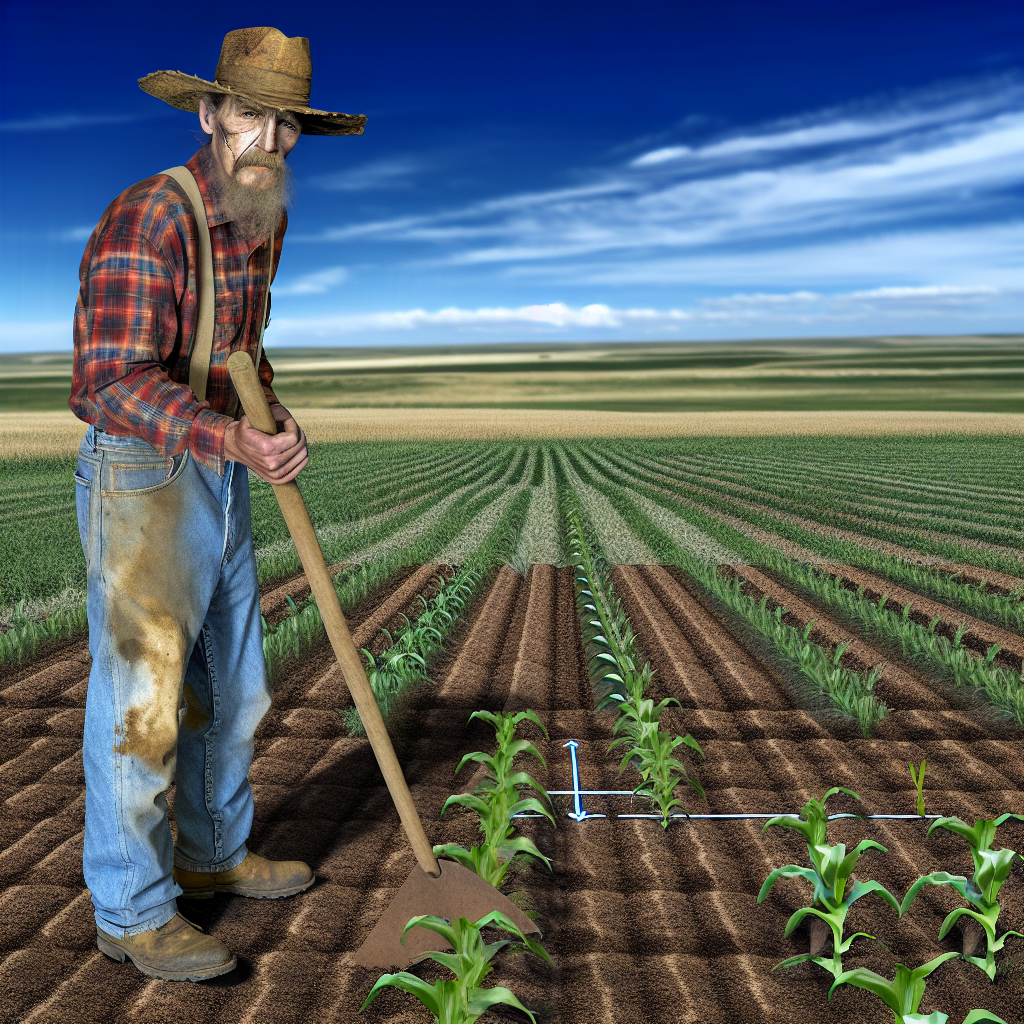Understanding the Importance of Crop Diversity in Sustainable Agriculture
Enhancing Soil Health
Crop diversity significantly improves soil health.
Different plants contribute various nutrients to the soil.
This practice also helps maintain soil structure.
In turn, healthy soil supports better water retention.
Additionally, healthy soil is less prone to erosion.
Pest and Disease Management
Diverse crops help manage pests more effectively.
When multiple crops grow together, pests struggle to thrive.
Moreover, plant diversity disrupts insect life cycles.
This can reduce the dependency on chemical pesticides.
As a result, farmers can achieve healthier ecosystems.
Improving Biodiversity
Crop diversity supports overall biodiversity.
A wider variety of plants attracts beneficial insects.
This includes predators that help control pest populations.
Furthermore, diverse fields sustain various wildlife species.
This enhances ecosystem resilience and stability.
Transform Your Agribusiness
Unlock your farm's potential with expert advice tailored to your needs. Get actionable steps that drive real results.
Get StartedAdapting to Climate Change
Diverse crops increase agricultural resilience to climate extremes.
Different varieties can withstand varying weather conditions.
This flexibility helps farmers adapt to climate variability.
As a result, production stability improves over time.
Ultimately, diverse practices ensure food security.
Maximizing Yield Potential
Incorporating varied crops can lead to higher yields.
This approach optimizes land use and resource allocation.
Diverse cropping systems yield better than monocultures.
Farmers can produce multiple harvests in a season.
Consequently, this generates more income over time.
Identifying Suitable Crops for Diversity in Local Soils and Climate
Understanding Your Local Soil Conditions
Evaluating the soil type is crucial for successful crop diversification.
Each soil type has unique characteristics that influence crop growth.
Take soil samples to analyze pH, texture, and nutrient levels.
Understanding these factors helps you choose compatible crops.
Consider consulting local agricultural extensions for guidance.
Assessing Climate Conditions
Climate plays a significant role in crop selection.
Analyze precipitation patterns and temperatures in your region.
Identify the growing season length and frost dates.
These data points inform your choice of crop varieties.
For instance, warm-season crops thrive in heat, while cool-season ones prefer milder conditions.
Selecting Compatible Crops
Diversifying your crop selection enhances resilience and yield.
Look for crops that complement each other nutritionally and physically.
Consider planting legumes alongside cereals to improve soil health.
These combinations can reduce pest pressures and disease outbreaks.
Showcase Your Farming Business
Publish your professional farming services profile on our blog for a one-time fee of $200 and reach a dedicated audience of farmers and agribusiness owners.
Publish Your ProfileResearch local success stories for ideas on effective crop pairings.
Implementing Crop Rotation Strategies
Crop rotation is vital for maintaining soil fertility and health.
Each time you rotate crops, you disrupt pest cycles.
This practice allows different nutrient demands to benefit the soil.
Plan rotations in advance, considering crop family and growth requirements.
Exploring Market Opportunities
Identifying market trends can guide your crop diversification efforts.
Research consumer demand for specific crops in local markets.
Networking with local producers can provide insights into profitable choices.
Consider creating a mixed planting plan that includes high-demand crops.
Diversification can lead to increased sales and customer satisfaction.
Techniques for Implementing Crop Rotation to Enhance Biodiversity
Understanding Crop Rotation
Crop rotation involves regularly changing the type of crop grown in each field.
This practice promotes soil health and fertility.
It prevents the depletion of specific nutrients.
Additionally, crop rotation disrupts pest and disease cycles.
Benefits of Diverse Crop Systems
Diverse crop systems support a wider range of soil microbes.
These microbes enhance nutrient cycling and organic matter decomposition.
Furthermore, they improve soil structure and water retention.
As a result, yields often increase when using diverse crops.
Planning Your Crop Rotation
Begin by identifying the crops suitable for your climate and soil.
Next, create a planting schedule that alternates different crop types.
Consider including legumes in your rotation to fix nitrogen.
This natural process enriches the soil without chemical fertilizers.
Integrating Cover Crops
Cover crops are vital for enhancing soil health during off-seasons.
They prevent soil erosion and suppress weeds effectively.
Moreover, cover crops can improve biodiversity within the ecosystem.
Integrating these crops supports pollinator and beneficial insect populations.
Monitoring and Adjusting Practices
Regularly monitor soil health and crop performance throughout the season.
Keep records to identify trends and issues over time.
Based on your observations, adjust your rotation plan as necessary.
This process helps maintain optimal conditions for crop diversity.
Find Out More: Sustainable Farm Pathways And Access Planning Essentials
The Role of Cover Crops in Supporting Soil Health and Crop Diversity
Enhancing Soil Structure
Cover crops play a vital role in enhancing soil structure.
They add organic matter, which improves soil aeration and water infiltration.
Consequently, healthier soil supports better root development and crop health.
Suppressing Weeds
Using cover crops effectively suppresses weed growth.
The dense foliage shades the ground, limiting sunlight for weeds.
As a result, this reduces the need for herbicides and lowers costs.
Improving Nutrient Cycling
Cover crops contribute significantly to nutrient cycling in agricultural systems.
They scavenge nutrients from deeper soil layers, making them available for following crops.
This process enhances nutrient efficiency and reduces fertilizer dependency.
Showcase Your Farming Business
Publish your professional farming services profile on our blog for a one-time fee of $200 and reach a dedicated audience of farmers and agribusiness owners.
Publish Your ProfilePromoting Biodiversity
Integrating diverse cover crops fosters biodiversity on the farm.
Diverse plant species support various beneficial insects and microorganisms.
Such biodiversity can improve pest control and create a more resilient ecosystem.
Boosting Soil Microbial Activity
Cover crops stimulate microbial activity in the soil.
This enhances decomposition and nutrient availability for crops.
Moreover, active soil microorganisms contribute to improved soil health overall.
Combating Erosion
Cover crops are instrumental in combating soil erosion.
Their root systems hold the soil together, reducing runoff.
Thus, they protect soil from being washed away, preserving agricultural land.
Benefits of Integrating Cover Crops
Ultimately, integrating cover crops into farming practices yields numerous benefits.
They enhance soil health and support crop diversity.
Farmers adopting these practices can expect improved productivity and sustainability.
Find Out More: Enhancing Crop Yields Through Biodiversity
Challenges and Solutions for Integrating Diverse Crops into Existing Practices
Identifying Common Challenges
Farmers often face reluctance to change established practices.
Transitioning to diverse crops can be daunting due to existing systems.
Limited knowledge about new crop varieties poses significant barriers.
Additionally, financial constraints can hinder experimentation with diverse crops.
Solutions for Overcoming Challenges
Education and training programs can enhance farmer knowledge.
Collaboration with agricultural experts can facilitate effective crop integration.
Financial aid and grants can support farmers in adopting diverse practices.
Moreover, creating a community network fosters shared knowledge and resources.
Enhancing Soil Health Through Crop Diversity
Diverse crops contribute to improved soil structure and fertility.
They promote beneficial microorganisms that enhance nutrient uptake.
Furthermore, incorporating cover crops safeguards against erosion.
Increasing Pest Resilience
Integrating multiple crop species reduces pest pressure effectively.
This diversity disrupts pest life cycles, lowering infestation rates.
Farmers can utilize natural predators attracted by diverse planting arrangements.
Market Acceptance of Diverse Crops
Consumer demand for diverse agricultural products is on the rise.
Farmers can tap into niche markets for specialty crops.
Direct marketing strategies can enhance visibility for these crops.
Adapting Existing Infrastructure
Modifying irrigation systems can accommodate various crop needs.
Farmers should assess their equipment for compatibility with diverse cropping systems.
Investing in technology can streamline new practices efficiently.
Continuous Evaluation and Adjustment
Regular assessments of crop performance guide future decisions.
Farmers should remain flexible to adjust to changing conditions.
Feedback loops foster ongoing improvement in farming practices.
Discover More: Conservation Tillage Practices to Preserve Soil Moisture

Benefits of Polyculture vs. Monoculture in Crop Production
Understanding Polyculture
Polyculture is the practice of growing multiple crops in the same space.
This approach promotes biodiversity and reduces the risk of total crop failure.
Additionally, it encourages beneficial interactions between different plant species.
Showcase Your Farming Business
Publish your professional farming services profile on our blog for a one-time fee of $200 and reach a dedicated audience of farmers and agribusiness owners.
Publish Your ProfileFarmers who adopt polyculture often notice healthier soil over time.
Advantages of Polyculture
One significant benefit of polyculture is pest control.
Diverse plantings attract beneficial insects that prey on pests.
This natural pest management reduces the need for chemical pesticides.
Moreover, polyculture improves nutrient absorption from the soil.
Different plants have varying rooting depths, maximizing soil utilization.
Understanding Monoculture
Monoculture refers to growing a single crop over a wide area.
This method is easier to manage and can simplify planting and harvesting.
However, it often leads to significant challenges over time.
Soil degradation is a common issue faced by monoculture farmers.
This occurs as nutrients are depleted without rotation to replenish them.
Disadvantages of Monoculture
Monoculture systems can become susceptible to diseases.
If a disease affects one plant, it can devastate an entire crop.
Furthermore, monocultures often worsen soil erosion.
With reduced plant diversity, the protective cover on the soil diminishes.
Comparing Yields
While monoculture may yield higher short-term outputs, polyculture often proves more sustainable.
Long-term agricultural health is critical for food security.
Studies show that diverse cropping systems can enhance overall productivity.
Environmental Impact
The environmental benefits of polyculture are substantial.
It fosters ecosystems that protect against soil erosion and water runoff.
In contrast, monoculture farming contributes to habitat loss and biodiversity decline.
Integrating Crop Diversity into Farming
Integrating crop diversity into farming practices benefits both farmers and the environment.
Both systems have their merits, yet polyculture holds distinct advantages.
Thus, adopting polyculture can lead to more resilient agricultural systems.
Uncover the Details: Integrating Carbon Sequestration into Farming Systems
Utilizing Companion Planting to Maximize Crop Yield and Pest Resistance
Understanding Companion Planting
Companion planting involves growing different plants together for mutual benefit.
This technique enhances growth, yields, and pest management in farming practices.
For instance, legumes fix nitrogen, benefiting neighboring plants.
Moreover, certain flowers attract beneficial insects that prey on pests.
Benefits of Companion Planting
Improved nutrient absorption is a significant advantage of this method.
Additionally, it encourages pollination and increases overall biodiversity.
Companion planting can also reduce the need for chemical pesticides.
When plants grow well together, they create a more robust and resilient ecosystem.
Examples of Effective Companions
Tomatoes and basil work well together, enhancing flavor and growth.
Cabbage and dill can deter pests that threaten cabbage crops.
Marigolds universally repel harmful nematodes and insects.
Furthermore, planting onions with carrots can help both thrive simultaneously.
Implementation Tips
Select compatible plants based on their growth habits and nutrient needs.
Observe growth patterns before finalizing planting arrangements.
Consider rotating companion plants each season to prevent soil depletion.
Showcase Your Farming Business
Publish your professional farming services profile on our blog for a one-time fee of $200 and reach a dedicated audience of farmers and agribusiness owners.
Publish Your ProfileMonitor conditions regularly to ensure optimal growth and pest control.
Overcoming Common Challenges
Sometimes, companion planting can lead to overcrowding issues.
To mitigate this, plan spacing carefully between different plant varieties.
Additionally, certain plants may have differing water requirements.
Ensure that watering practices accommodate the needs of all companions.
Assessing the Economic Impact of Crop Diversity on Farm Profitability
Understanding Crop Diversity
Crop diversity refers to growing a variety of crops in a single area.
This practice enhances ecosystem resilience and productivity.
Moreover, it minimizes risks associated with monoculture farming.
Improving Soil Health and Fertility
Diverse cropping systems improve soil health significantly.
Different crops contribute various nutrients to the soil.
This diversity reduces the need for chemical fertilizers.
As a result, farmers can lower input costs over time.
Enhancing Pest and Disease Resistance
Crop diversity helps in managing pest populations naturally.
When farmers grow multiple crops, pests find it harder to thrive.
This reduces the need for pesticide applications.
Consequently, farmers save money on pest control solutions.
Creating New Market Opportunities
Diverse crops open up new market avenues for farmers.
For instance, farmers can tap into niche markets for organic produce.
This can lead to higher profit margins compared to conventional crops.
Moreover, consumers increasingly seek diverse food options.
Assessing Risk and Building Resilience
Diverse cropping systems are more resilient to climate changes.
Farmers can adapt to fluctuating weather patterns efficiently.
Thus, crop diversity contributes to long-term economic stability.
Additionally, this practice mitigates risks linked to market volatility.
Evaluating Long-Term Profitability
Farmers should analyze the long-term benefits of crop diversity.
While initial investment may be high, the returns can be substantial.
A diverse farm can lead to steady income throughout the year.
This consistent revenue is pivotal for farm sustainability.
Implementing Crop Diversity Strategies
Farmers can incorporate cover crops as a practical strategy.
This method protects soil during off-seasons and boosts nutrients.
Intercropping is another effective technique for diversity.
These practices promote healthy ecosystems and profitable yields.
Additional Resources
Conservation and Biological Diversity in Organic Production | Home




